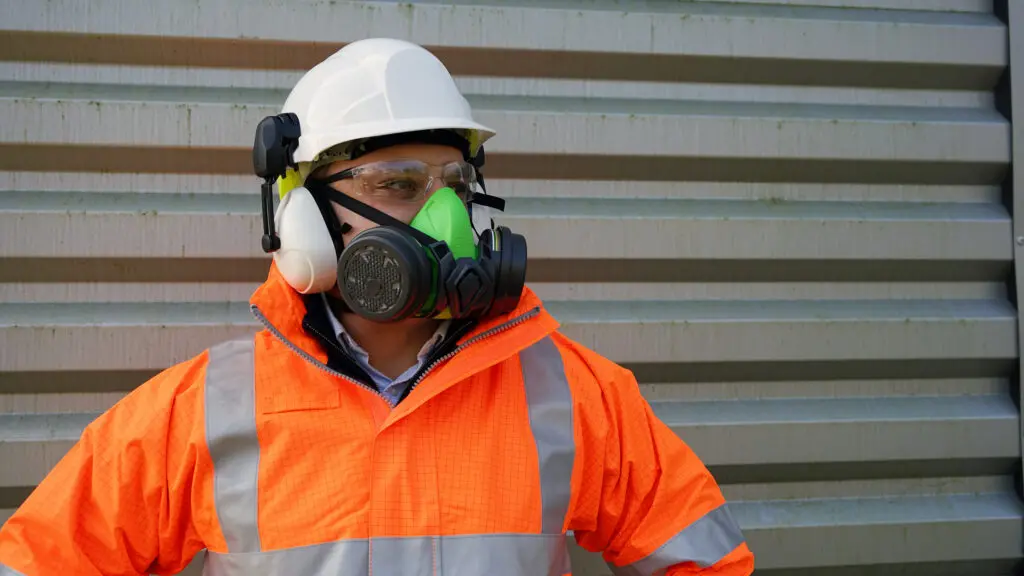In industries where hazardous substances are prevalent, ensuring the proper fit of respiratory protective equipment (RPE) is critical. A secure fit prevents leaks, safeguarding employees from harmful exposure to substances. A proper fit can be determined through an RPE face fit test. Conducting a fit test can only be done through specific procedures and at proper intervals to accommodate changes in fit.

When is a Fit Test Needed for RPE?
Loose fitting RPE such as hoods, helmets, blouses and suits (including powered respirators or suits) may not require fit testing. However, for tight fitting RPE, fit testing is a legal requirement.
A fit test should happen not only at the initial stage of getting the equipment, but also throughout the lifecycle of the equipment and when there is a change in the type, size, make or model RPE being used.
Aside from changes in the equipment, tests should also occur when the individual wearer may have had a change in fit. A new test should be repeated under the following circumstances:
- Weight loss or gain
- Substantial dental work
- Facial changes (such as scars, or moles) that may affect the seal
- New facial piercings
- Introduction or change of other PPE around the head or face
How Can Face Fit be Tested?
It is a legal requirement that workers using tight fitting RPE are fit tested by a designated competent person. A tester must be suitably trained, qualified and experienced. The Fit2Fit scheme introduced by the BSIF allows testers to become accredited through training in the appropriate processes. This accreditation is a confident signifier that your tester can safely complete a professional fit test.
The Fit2Fit scheme provide a list of approved resources and courses here.
There are two methods of testing officially recognised by the HSE.
Qualitative fit testing (QLFT):
Qualitative fit testing (QLFT) is a pass/fail test based on the wearer’s subjective assessment of any leakage through the face seal region. This is done by introducing a bitter or sweet tasting aerosol as a test agent.
A QLFT is made up with two tests:
- The sensitivity test (no mask worn)
- The fit test (mask worn)
Both elements require the wearer to have a clean palate before beginning the test. The sensitivity test informs the fit test because it determines the wearer’s ability to taste the sensitivity solution and the wearer’s degree of sensitivity to the solution. If the wearer cannot detect the agent in the sensitivity stage, and continues to in the fit test stage, this means the equipment has failed the test and that the equipment is not safe to wear for working.
This method is suitable for disposable and reusable half masks, however QLFT is not suitable for full-face masks.
Quantitative fit testing (QNFT):
Quantitative fit testing (QNFT) provides a numerical measure of how well a facepiece seals against a wearer’s face; this is called a fit factor. These tests give an objective measure of face fit.
Completing this test requires specialist equipment and the exact process depends on the type of equipment used. A particle counting method, for example, may require practical exercises to measure the number of particles entering the mask.
QNFT methods are suitable for disposable and reusable half masks and full-face masks.
The Effect of Facial Hair with RPE
Both the Health and Safety Executive (HSE) and Control of Substances Hazardous to Health Regulations refer to the need to be clean shaven around the seal of the face piece. Many masks rely on a seal to be created with the wearer’s face – facial hair, including stubble, makes it impossible for a seal to be created. The HSE suggest that workers should be clean shaven no more than 8 hours before working with RPE.
If a wearer is unable to have a cleanly shaven face, alternate PPE could be provided. Powered respirators (PAPR), for example, can feature loose fitting headpieces which do not require a tight fit. A seal is not needed for these so individuals are not required to be clean shaven.
For additional guidance on selecting the correct RPE for your staff, please visit the HSE website or get in touch with a member of our expert team.
To learn more about choosing the correct RPE for purpose, you can read our article by clicking here.




